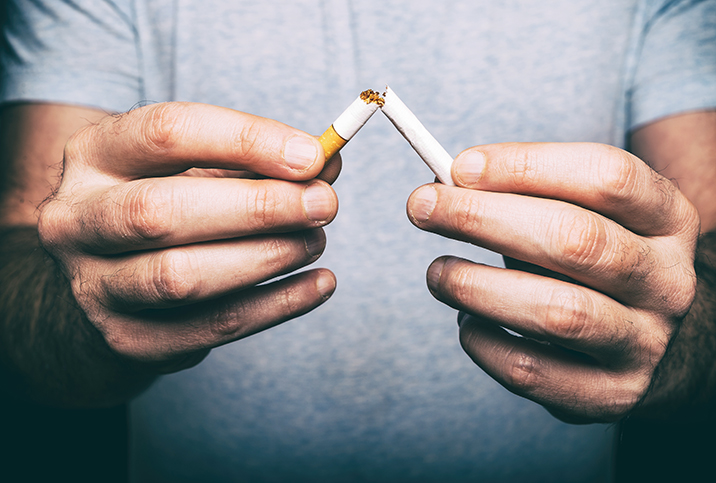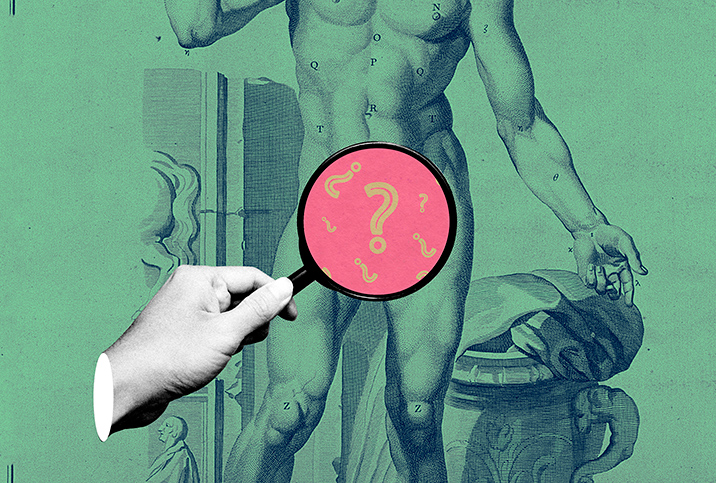How Do You Keep Testicular Atrophy From Getting Worse?

Testicular atrophy. The idea of your testicle shrinking doesn't sound great, does it?
First things first: Cold-induced shrinkage—that feeling of your scrotum pulling inward when chilled—is not the same as testicular atrophy.
Shrinkage in response to cold temperatures is a normal, healthy way for your body to keep your testicles warm in a chilly environment. Testicular atrophy, on the other hand, involves an actual decrease in the size of one or both testicles.
What leads to testicular atrophy and who is susceptible? And aside from alarm about your testicles shrinking, what are the risks associated with this condition?
If you're suffering from the condition, you need to know how it can be treated or managed, what the long-term consequences are, if it can damage your fertility and how to counteract those effects.
What are the potential causes of testicular atrophy?
Testicular atrophy is traced back to several causes, though they typically fall under two primary categories: hormonal and circulatory.
Symptoms of testicular atrophy include painful or soft testes. Other symptoms are much like those of low testosterone:
- Infertility
- Decreased sex drive
- Loss of muscle mass
- Reduced hair growth on the head, face and genitals
As low sperm count can represent a red flag for some lifestyle habits or health conditions, testicular atrophy can point to a litany of potential issues.
"It's a broad topic," said Timothy Clinton, M.D., a urologist at Brigham and Women's Hospital in Boston.
Some causes are more concerning than others.
"Testicular atrophy is [a] common condition as men age," said Aaron Lentz, M.D., a urologist at Duke Health in Raleigh, North Carolina. "The most common causes include aging, varicocele, trauma, excessive alcohol use and testosterone replacement."
Anything that disrupts blood flow to the testicles can lead to atrophy. For instance, a varicocele, or swollen veins in the scrotum, can cause blood to pool rather than circulate properly, which could lead to this condition.
Clinton said any testicular trauma or infection that obstructs the blood supply to a testicle can cause atrophy. Orchitis, an inflammation of the testes caused by a virus or bacteria, can lead to atrophy, too. In some cases, orchitis can be caused by a sexually transmitted infection (STI).
Testicular torsion, a painful twisting of the spermatic cord connected to each testis, is a potential cause of atrophy that is considered a medical emergency.
"[The] long-term effect of torsion can lead to significant testicular atrophy," Clinton explained. "This is one scenario that needs to be addressed urgently."
Additionally, there are hormonal causes of testicular atrophy. An age-related decrease in testicle size is largely unpreventable. Over time, some men experience a natural drop in testosterone levels. Men who take steroids or testosterone replacements can also experience hormonal-related testicular atrophy.
Finally, alcohol abuse can potentially lower testosterone levels and cause atrophy.
Who's at risk for testicular atrophy?
Testicular atrophy can happen even to healthy men as they age. Lentz listed these groups of people as being at particularly high risk:
- Male patients on testosterone replacement therapy (TRT)
- Men who have undergone scrotal/inguinal surgery
- Men who consume large amounts of alcohol
Men who routinely take exogenous hormones (including steroids) can experience testicular atrophy, Clinton added. Hormone imbalance isn't good for many reasons, testicular atrophy among them.
Diagnosis of the condition is pretty straightforward. A doctor reviews your medical history and conducts a physical examination of your testicles.
Beyond that, they may test for an STI, perform an ultrasound or order a full blood workup.
What are the long-term consequences of untreated testicular atrophy?
Allowing testicular atrophy to advance without treatment has two main potential consequences: testosterone deficiency and infertility.
Testosterone deficiency might sound like an invisible problem, but it can cause several other issues. According to Lentz, the symptoms of testosterone deficiency include:
- Loss of lean muscle mass
- Decreased libido
- Weight gain
- Erectile dysfunction (ED)
- Moodiness
- Cognitive changes
Infertility, meanwhile, takes time to develop.
"The affected testicle slowly loses its capacity for normal sperm [production]," Clinton explained. "While almost never urgent to preserve fertility, if the cause of testicular atrophy is reversible, then this should be addressed as soon as possible."
How do you treat testicular atrophy?
Reversing testicular atrophy is impossible in most cases, according to Clinton. But letting atrophy advance unchecked has consequences besides seeing your testicles get smaller.
You can still take charge of the situation by getting treatment as soon as possible, which can help prevent further damage.
"The most important step is to identify the underlying cause and address this first," Lentz said. "Treatments are available and usually prescribed by a urologist specializing in sexual health and reproductive medicine."
With so many causes, treatment for testicular atrophy varies. A doctor might suggest lifestyle changes if a patient uses steroids or struggles with alcohol abuse.
Medication could help, for example, in cases of STI-caused orchitis and in hormonal cases. But if hormone replacement is the culprit, treatment may need to be suspended. Cases of testicular torsion, on the other hand, could necessitate immediate surgery.
The bottom line
In the end, the sooner you talk to your doctor about testicular atrophy, the better. This isn't a condition that will fix itself. Letting it go unchecked could lead to further atrophy.
The first step is a consultation with a healthcare professional, and video visits have become a viable option for most people. Visit Giddy telehealth to get connected.


















